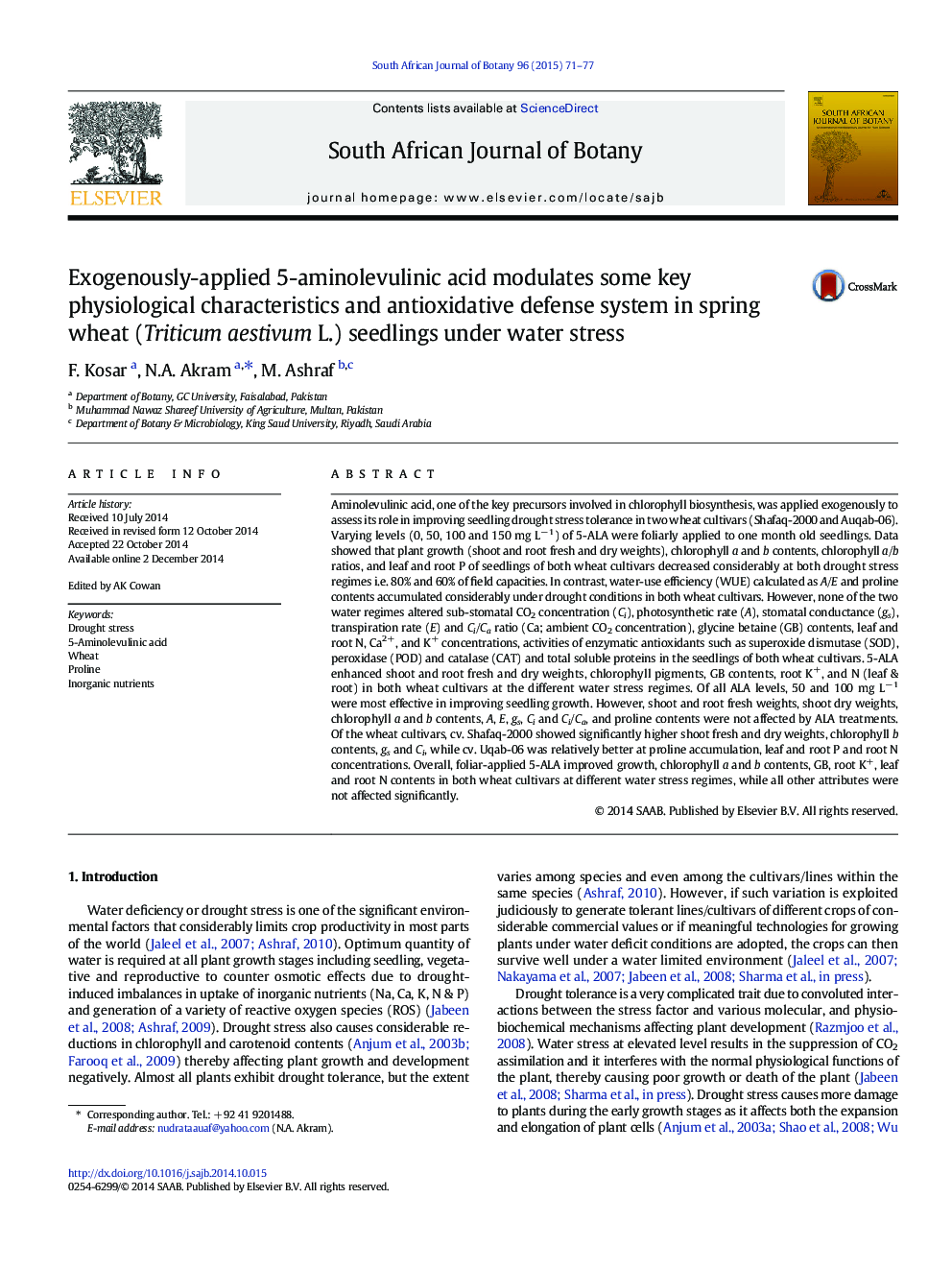| کد مقاله | کد نشریه | سال انتشار | مقاله انگلیسی | نسخه تمام متن |
|---|---|---|---|---|
| 4520592 | 1625162 | 2015 | 7 صفحه PDF | دانلود رایگان |

• Exogenously-applied 5-aminolevulinic acid modulates antioxidative defense system in wheat seedlings under water stress.
• Whether or not foliar-applied 5-ALA could ameliorate the harmful effects of drought at the seedling stage of wheat plants.
• Role of ALA in accumulation of inorganic nutrients and osmoprotectants in wheat seedlings under drought stress.
Aminolevulinic acid, one of the key precursors involved in chlorophyll biosynthesis, was applied exogenously to assess its role in improving seedling drought stress tolerance in two wheat cultivars (Shafaq-2000 and Auqab-06). Varying levels (0, 50, 100 and 150 mg L− 1) of 5-ALA were foliarly applied to one month old seedlings. Data showed that plant growth (shoot and root fresh and dry weights), chlorophyll a and b contents, chlorophyll a/b ratios, and leaf and root P of seedlings of both wheat cultivars decreased considerably at both drought stress regimes i.e. 80% and 60% of field capacities. In contrast, water-use efficiency (WUE) calculated as A/E and proline contents accumulated considerably under drought conditions in both wheat cultivars. However, none of the two water regimes altered sub-stomatal CO2 concentration (Ci), photosynthetic rate (A), stomatal conductance (gs), transpiration rate (E) and Ci/Ca ratio (Ca; ambient CO2 concentration), glycine betaine (GB) contents, leaf and root N, Ca2 +, and K+ concentrations, activities of enzymatic antioxidants such as superoxide dismutase (SOD), peroxidase (POD) and catalase (CAT) and total soluble proteins in the seedlings of both wheat cultivars. 5-ALA enhanced shoot and root fresh and dry weights, chlorophyll pigments, GB contents, root K+, and N (leaf & root) in both wheat cultivars at the different water stress regimes. Of all ALA levels, 50 and 100 mg L− 1 were most effective in improving seedling growth. However, shoot and root fresh weights, shoot dry weights, chlorophyll a and b contents, A, E, gs, Ci and Ci/Ca, and proline contents were not affected by ALA treatments. Of the wheat cultivars, cv. Shafaq-2000 showed significantly higher shoot fresh and dry weights, chlorophyll b contents, gs and Ci, while cv. Uqab-06 was relatively better at proline accumulation, leaf and root P and root N concentrations. Overall, foliar-applied 5-ALA improved growth, chlorophyll a and b contents, GB, root K+, leaf and root N contents in both wheat cultivars at different water stress regimes, while all other attributes were not affected significantly.
Journal: South African Journal of Botany - Volume 96, January 2015, Pages 71–77